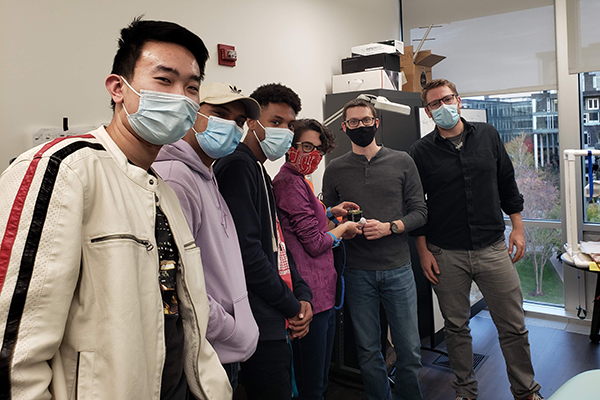Satellite designed at CMU launches into low-Earth orbit
Brandon Lucia’s lab developed the Tartan-Artibeus-1 Satellite, the world’s first batteryless PocketQube nanosatellite, deployed to low-Earth orbit aboard the SpaceX Transporter-3 Rocket, earlier this week.
SpaceX had a successful Falcon 9 launch of Transporter-3 to orbit from Space Launch Complex 40 (SLC-40) at Cape Canaveral Space Force Station in Florida on January 13, 2022. Aboard was the Tartan-Artibeus-1 Satellite, developed at Carnegie Mellon University, where it was deployed to low-Earth orbit on the SpaceX Transporter-3 Rocket. It was launched as part of the Alba Unicorn constellation under the name Unicorn-2TA1.
“Our lab developed the Tartan-Artibeus-1 Satellite, which is what we believe to be the world’s first batteryless PocketQube nanosatellite,” said Brandon Lucia, an associate professor of electrical and computer engineering. “This project was led by Ph.D. students Brad Denby and Emily Ruppel from my lab and in collaboration with Alba Orbital, our launch services provider.”
The mission’s goal was to demonstrate the viability of PocketQube-scale nanosatellites that operate reliably without batteries, eliminating the cost and complexity of battery-based power systems in nanosatellites. The sensor-equipped, 5cmx5cmx5cm cube (1/8 the size of a CubeSat) can sense its environment and perform orbital edge computing to process sensor data in a way that is robust to intermittent operation.

Source: College of Engineering
Professor Brandon Lucia with his lab students.
During the mission, the satellite collected telemetry data about its operation (power state, stored energy, GPS location) and collected and processed sensor data about its environment using applications such as machine learning and inference. The results were sent back to Earth using a low-power radio.

Source: College of Engineering
The sensor-equipped, 5cmx5cmx5cm cube satellite will sense its environment and perform orbital edge computing to process sensor data in a way that is robust to intermittent operation.
“A unique aspect of this mission was that while on orbit, the satellite ran Cote, a physics-based orbital dynamics model and orbital edge computing simulator that we developed, giving the satellite better situational awareness without the need to communicate to earth,” said Lucia. “This batteryless satellite is the first of its kind and we are very excited for the new scientific results enabled by this unique deployment to Earth’s orbit.”
Falcon 9’s first stage booster previously launched Crew Demo-2, ANASIS-II, CRS-21, Transporter-1, and five Starlink missions. Following stage separation, SpaceX will land Falcon 9’s first stage on Landing Zone 1 (LZ-1) at Cape Canaveral Space Force Station.
Transporter-3 is SpaceX’s third dedicated rideshare mission, and on board this launch were 105 spacecraft (including CubeSats, microsats, PocketQubes, and orbital transfer vehicles).
Photo (top): SpaceX Falcon 9 launch of Transporter-3 to orbit from Space Launch Complex 40 (SLC-40) at Cape Canaveral Space Force Station in Florida on January 13, 2022. Photo courtesy of SpaceX.
